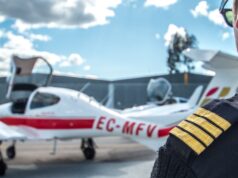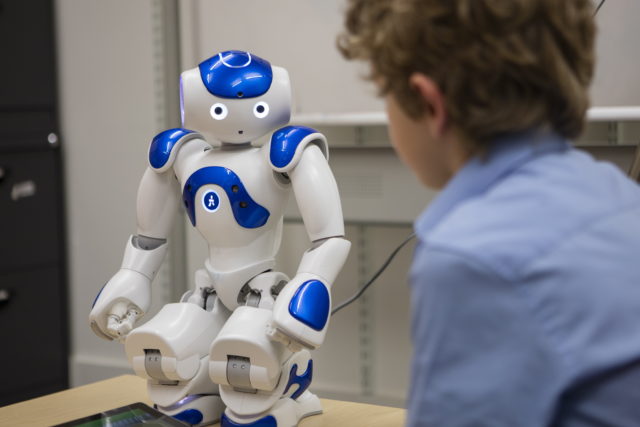
Education has always been a controversial discussion topic, no matter where the debate took place: a meeting at the Ministry of Education, a conference, a forum, a blog, a teacher-parents meeting at school, in the classroom or around the table, while dining. Whether we are experts, received basic professional training or we simply speak out of our own experience as former students, we all like to share our thoughts when it comes to efficient schooling.
The desire to find the perfect ‘recipe’ for 100% successful learning has lead our educational systems from the classical Trivium through methods and approaches such as The Silent Way or the Total Physical Response to end up with the full-scale implementation of ICTs.
New classroom approaches, methods, and techniques are continually developed, debated upon, implemented and then replaced with newer, more effective ones. Is the perfect ‘learning recipe’ a utopia? Maybe it is. But we all agree on something: without education, there is no progress. Visit Immerse.Education to know more about the importance of technology in education.
The sinuous path from Trivium to ICTs and robotics
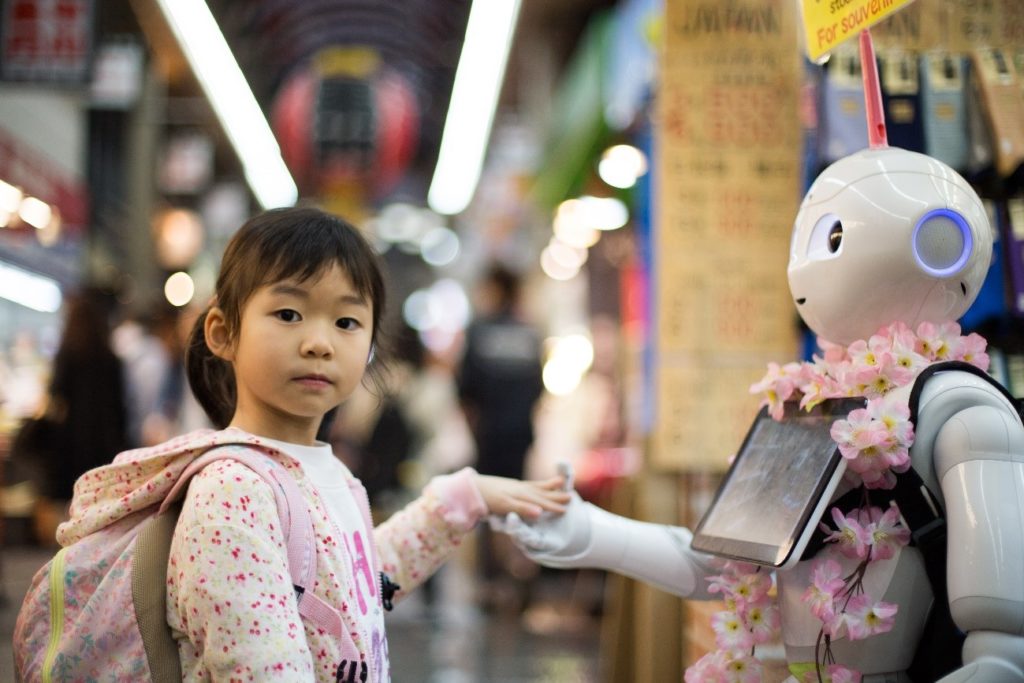
The constant technological advancements have left their mark on each and every facet of our lives: the way we communicate, interact, construct our identity, live, consume, produce, and learn. Their impact is so overwhelming that we have no other choice than to keep up with them. And our educational systems should make no exception. The old belief that ‘everything a teacher needs is a classroom and some students’ is no longer a valid paradigm.
The introduction of ICTs in classrooms has completely reshaped knowledge acquisition. Access to the Internet, overhead projectors, interactive boards, comprehensive online databases, presentation and animation software, or interactive teaching resources are only some of the technologies that teachers have been constantly using over the past decades to present information to their students in a more dynamic, direct and astonishing manner.
The use of ICTs in education has transformed and revitalized the teaching-learning process. And, even though the use of robots in the field of education is still a rather new concept, it won’t be long until robots become a key classroom member allowing teachers and students to improve and personalize the learning process.
But are teachers ready to give up their omniscient, omnipotent role and adapt teaching to the demands of an ever-advancing society? Are they ready to assume a new role and introduce robotics in their classrooms?
This adaptation process is a double-edged sword, as students must also cope with the fact that their role has also changed: the time when they were mere collectors and reciters of information has ended. Now they must become intelligent information users and understand that educational robots can help them develop a set of crucial skills such as creativity, imagination, critical thinking, new communication strategies, pro-activity, preparing for an inevitable tech-heavy future, etc.
More and more companies understand the impact of new technologies and are redirecting their efforts into creating educational robotic resources that will completely reshape the classroom dynamics and learning process. Hanson Robotics, Advanced Robotics, Van Robotics, Rozum, or Modular Robotics are only a few examples of all the companies out there that understand the huge potential of educational robotics.
Advantages of using robots in the classroom
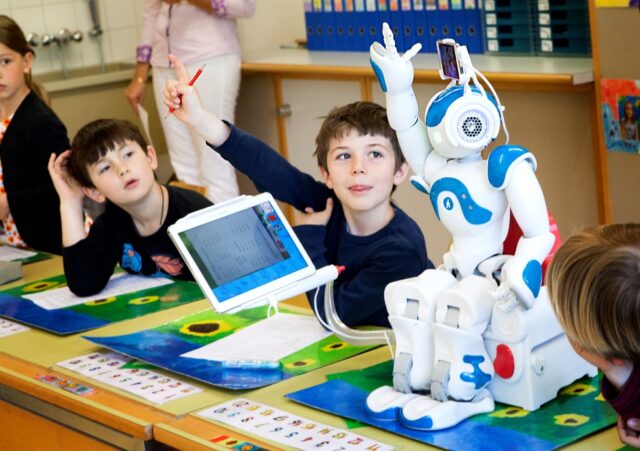
Though the use of pedagogical robotics is still in its incipient stage, the literature on its advantages for classroom use is already abundant. Experts in the field –such as Lasse Rouhiainen or Sir Anthony Seldon – seem to agree that pedagogical robotics will enable teachers not only to motivate and inspire their students but also personalize the learning process according to each student’s needs and aptitudes.
It probably won’t take longer than a decade to create robots capable of reading children’s facial expressions – and, why not, even their brains – and analyse their actual learning process and provide teachers with unparalleled feedback that will trigger an enhanced teaching methodology.
Strategic problem-solving, higher order thinking, logical and analytical reasoning, computational thinking, teamwork, and co-operative skills are only some examples of the abilities that educational robotics helps to enhance. Useless to say that, in the near future, all these abilities will become a key factor in many professional areas.
What’s more, educational robotics helps children with special needs – such as autism, attention deficit, or developmental disorders – develop social and communication skills by means of a tailor-made educational path.
Let’s have a look at some impressive examples of robots that have already made their way into classrooms:
Elias – the social teaching robot
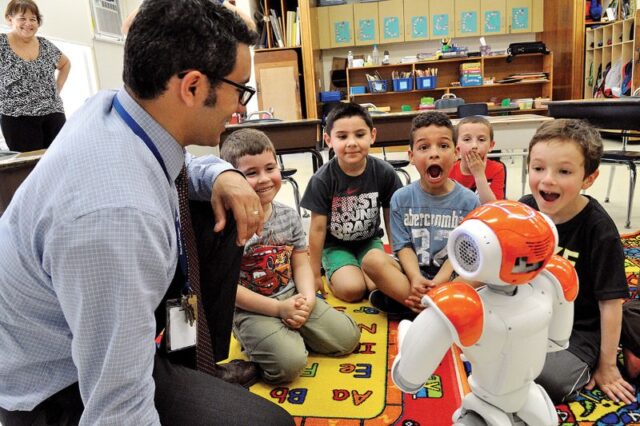
Developed by teachers based on extensive scientific research, Elias is an amazing language learning app based on AI and a voice user interface (VUI). Elias can understand and speak 23 different languages.
What makes Elias so amazing? One of the main reasons is that students can practice a language without peer pressure and fear of mistakes. Elias will never run of patience or laugh at you if you make mistakes!
Since it can dance, sing, and play games, Elias creates a happy learning environment, thus inspiring students to participate in classroom activities. In addition, Elias can provide teachers with useful feedback on the progress of each student, allowing them to adjust the teaching methodology.
However, there is something Elias is not that great at: maintain order and discipline. Language teachers can rest assured that, at least for now, their presence in the classroom is still necessary.
Here you can see how Elias actually works. If you want to learn more about Elias, you can check out its official website.
Cubelets – robot blocks that build creativity and long-term learning
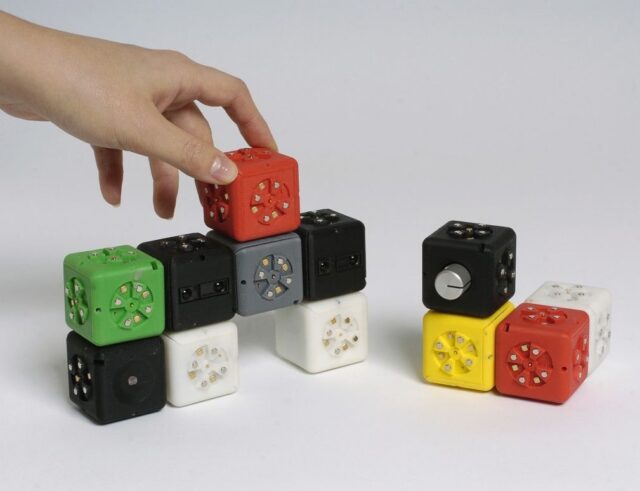
Developed by Modular Robotics, Cubelets are small robot blocks that use tactile coding to trigger engaging and intuitive play. Ideal for any age or skill level, Cubelets fosters collaboration, communication skills, teamwork, computational and critical thinking, coding, problem-solving, etc.
Want to see how Cubelets work? Check out this video on a real classroom experience or visit the official website. As their creators point out, with Cubelets, any room becomes a classroom in which children’s imagination has no boundaries.
Pepper and NAO
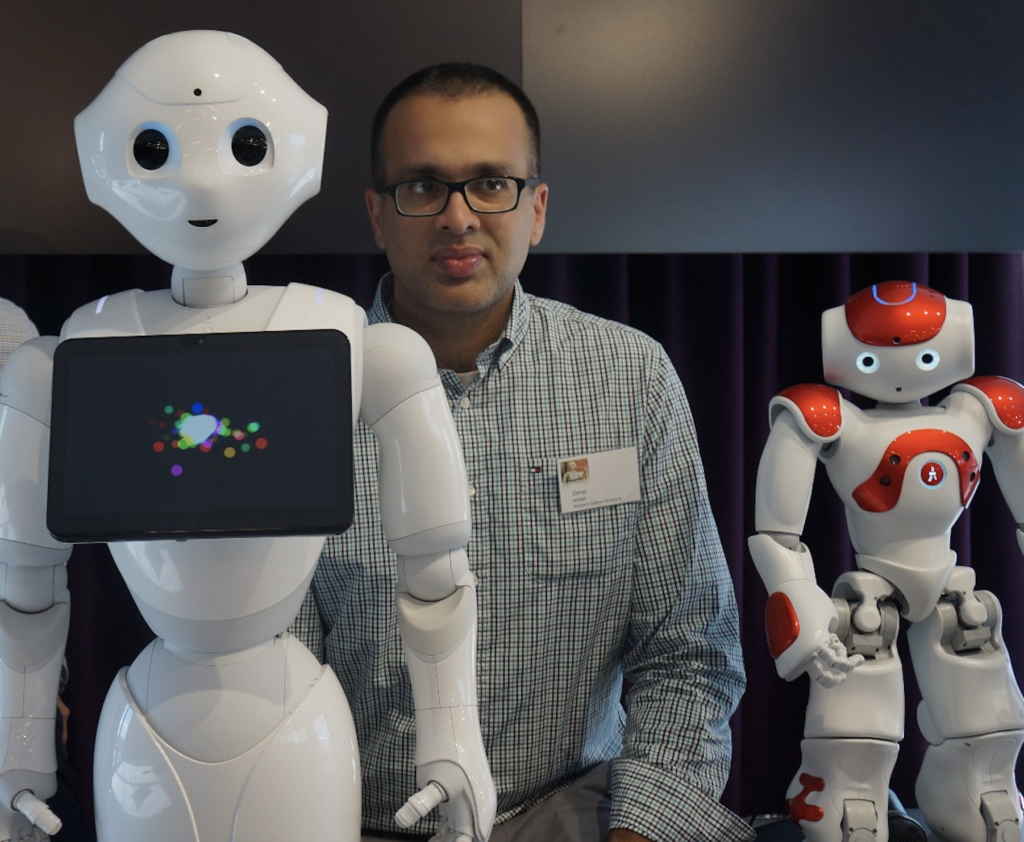
Originally developed by Aldebaran Robotics and currently under the management of SoftBank Robotics, NAO and Pepper have already made their way in classrooms from all over the world. What makes these versatile robots such amazing teaching tools?
Apart from the obvious entertainment factor, Pepper and NAO have been proved to enhance students’ focus and concentration, foster creativity and innovation, improve self-motivation and self-esteem, foster problem-solving and analytical skills, support the development of social and emotional skills, foster participation and peer-to-peer interaction, and provide teachers with in-depth feedback on the development of each student.
If you want to see how Pepper and NAO interact between themselves, this video is a must see. If you are wondering how children perceive them and how they can be used in the classroom, take a look here and here.
DOBOT Robotic Arm
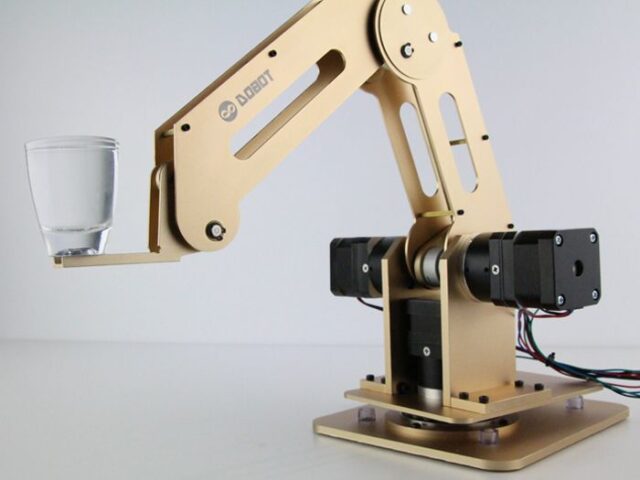
A highly performant 4-axis robotic arm able to 3D print, draw, write, and grab, DOBOT is the ideal choice for STEM programs. Developed by RobotLab, DOBOT combines programming, automation, mechanics, and electronics and fosters learning across various subjects: technology, engineering, robotics, design, or computer science.
DOBOT opens up unlimited possibilities for fun and cooperative learning. For instance, its pick & place ability allows students to simulate a production line similar to the one you would find in a real factory. Here you can see an example of this function.
Anastasia – the chess-savvy robotic arm
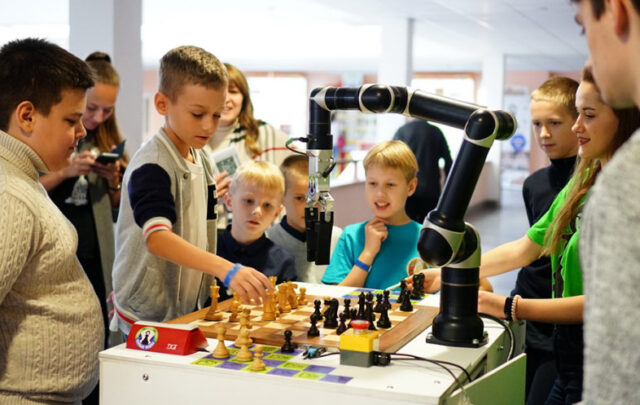
Developed by Rozum – a promising robotics start-up that has already caught Samsung’s attention, – and students from BSTU, Anastasia was created to teach children how to play chess. Though still under development, what makes Anastasia unique is her ability to let children win to cheer them up. A patient trainer able to think, study, analyse, and act, Anastasia will soon be equipped with cameras and a voice apparatus which will allow her to monitor her opponents and make comments and suggestions. You can check out Anastasia’s skills here.
Kaspar – a social robot for children with autism
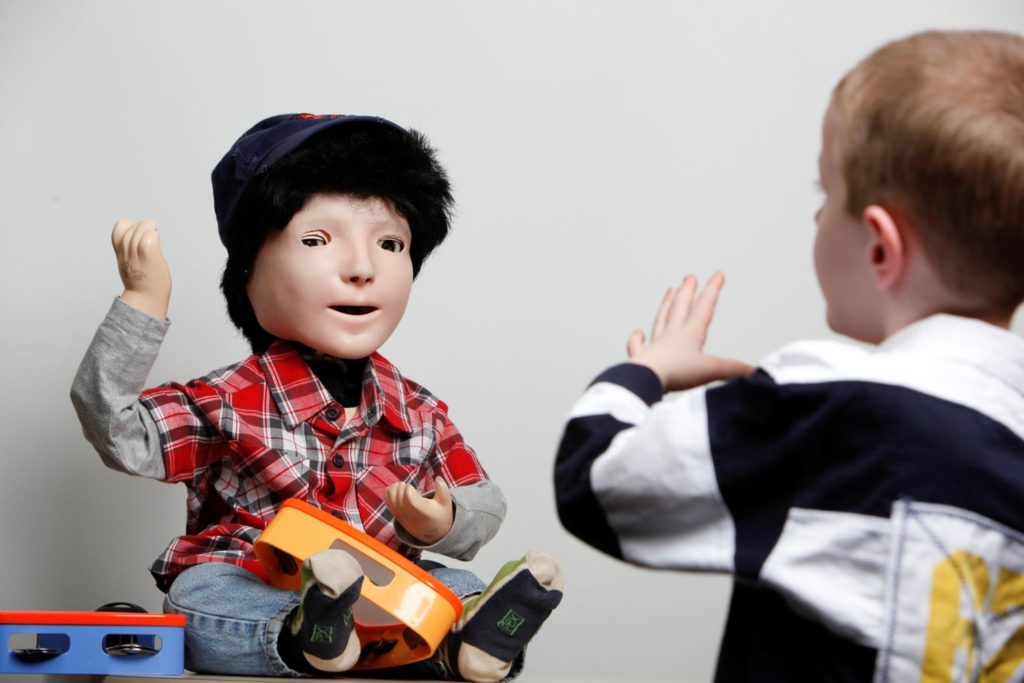
Developed by the University of Hertfordshire, Kaspar is a doll-like humanoid that has been thought out to support children who suffer from autism or have other communication difficulties. Though its face may seem less expressive and engaging than you would expect from an educational robot, there is a good reason for it: remove pressure from autistic children who find it difficult to read facial expressions and identify voice tones.
Among the things Kasper is able to do, we can highlight its ability to function as a social mediator, teaching children to communicate and interact with other people. Kasper is also able to autonomously respond to touch, helping children with autism learn about tactile interactions that are socially acceptable.
If you want to discover what Kasper can do for kids with special needs and participate in this amazing project through donations, you can check out the University of Hertfordshire website.
To sum up…
As we have seen, the use of technology in the classroom is a big driver for inspiration and motivation, making learning more entertaining, cooperative and adaptable. I can’t imagine a child – regardless of his/her age – who wouldn’t enjoy a talking and cooperative machine helping him/her with homework or classwork tasks.
There’s a basic ‘trick’ behind successful learning: if you have fun along the way, you will pick up knowledge without even noticing it! Interactive learning methods offer students the possibility to approach the content imaginatively and learn collaboratively.
References
Tíscar, L. (2009). The role of the university in the construction of the digital identity. Digital culture and creative practices in education. University and Knowledge Society Journal, 6(1).
If you want to learn more about Artificial Intelligence check out Techslang.


